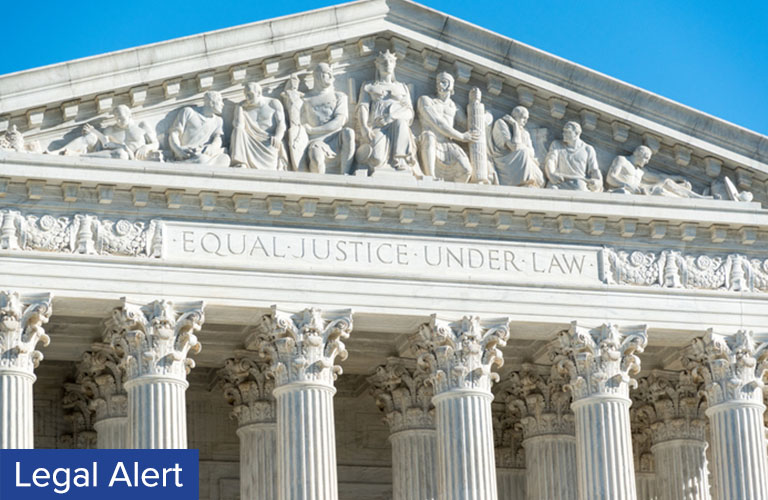
As a result of yesterday’s Supreme Court’s decision in U.S. v. Arthrex, any party dissatisfied with the result of an Inter Partes Review (IPR) can now seek review by the Director of the Patent and Trademark Office (PTO). Previously, and as codified by the America Invents Act (AIA), IPR decisions were appealed directly to the U.S. Court of Appeals for the Federal Circuit, with no possible review at the PTO. Yet to be determined will be the details of how this extra appeal step is to be implemented. And will, for example, the Director really have time, resources and responsibility for reviewing all the IPR decisions that losing parties will inevitably seek to overturn?
To the casual observer, the Arthrex decision comes across as more about constitutional law than patent law. After all, the question put before the Court was whether or not Administrative Patent Judges (APJs), those 250 or so officers appointed by the Director of the PTO, were appointed in violation of the of the Appointments Clause of the Constitution, Art. II, §2, cl. 2. A second question was what should the Court do if APJs were found to be unconstitutionally appointed? One option would have been to nullify hundreds of previously decided IPR proceedings. That result would have put the entire patent system, not just IPRs, in a state of total chaos. In the case below, after finding APJs unconstitutionally appointed, the Federal Circuit’s remedy was to sever part of the AIA, 5 U.S.C. 7513(a), which protects federal employees from firing without cause. Since APJs were therefore dismissible without cause, the Federal Circuit reasoned, they were transmogrified from “principal” to “inferior” officers, and thus reborn as constitutionally appointed officers.
What the Supreme Court did in its Arthrex decision is somewhat remarkable. First, and not so remarkably, the Supreme Court agreed with the Federal Circuit that the APJs were principal officers, and thus unconstitutionally appointed. However, the Supreme Court took a different approach to fixing the problem. Instead of subtracting from the AIA, by taking out an entirely legislated provision of the AIA, 5 U.S.C. 7513(a), as the Federal Circuit did, the Supreme Court added law to the AIA, by stating that the APJs can be made inferior by giving the Director of the PTO the right to review final decisions of the APJs. That little addition was not in the AIA, and in fact, it circumvents one of the specific goals of AIA which was to streamline patent litigation. It is easy enough, though arguably nonetheless improper, for a judicial body to carve out portions of legislation as the Federal Circuit attempted, but it is another thing entirely to create a new channel of appellate review, as the Supreme Court did. Considering that anyone who loses an IPR is bound to appeal to the Director, the Director will have to figure out how to handle this new workload.
The IPR system has been under fire since its creation, yet it has survived repeated attacks from many directions. Those most critical of the IPR system were no doubt hoping for that draconian result where all IPRs would be thrown out and chaos would reign. At times, even the Federal Circuit has expressed frustration with IPRs. Given the moniker “patent death squads” by former Chief Judge Randall Rader, IPR panels have reportedly taken down over 2,000 patents since implementation of the AIA in 2012. And these are not just any patents – these are patents that are usually being litigated, meaning they are not parked on shelves. The biggest filers of IPRs, and the biggest proponents of the IPR system, include the likes of Google and Apple. Whether new challenges will be mounted against the IPR system remains to be seen.
Arthrex brings to light, but certainly does not solve, an even bigger conflict, one between the quasi-judicial IPR system created in 2012, and the preexisting federal court system, dating back to shortly after ratification of the Constitution. Judges in the federal court system have long been regarded as principal officers, appointed by presidents and confirmed by the Senate. APJs do not occupy the same status, and will remain appointed by the presidentially appointed Director of the PTO, yet APJs have arguably equal rights to invalidate patents as federal judges. Only five justices of the Supreme Court believed that APJs were principal officers who needed to be knocked down to inferior to make the IPR system work. The other four, led by Justice Thomas in his dissent, were convinced APJs were never principal officers and therefore, no additions to or subtractions from the AIA legislation were needed. Now that APJs are without question “inferior,” new questions arise as to whether their newly minted status could impact the deference APJs are accorded when reviewing claim construction, rulings on evidence, etc., during IPR proceedings.

